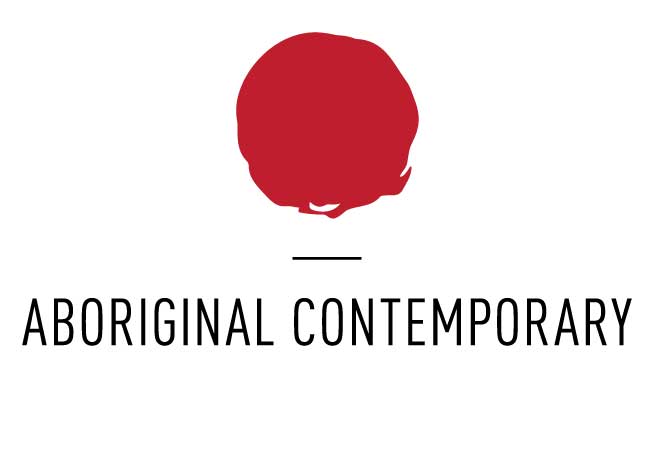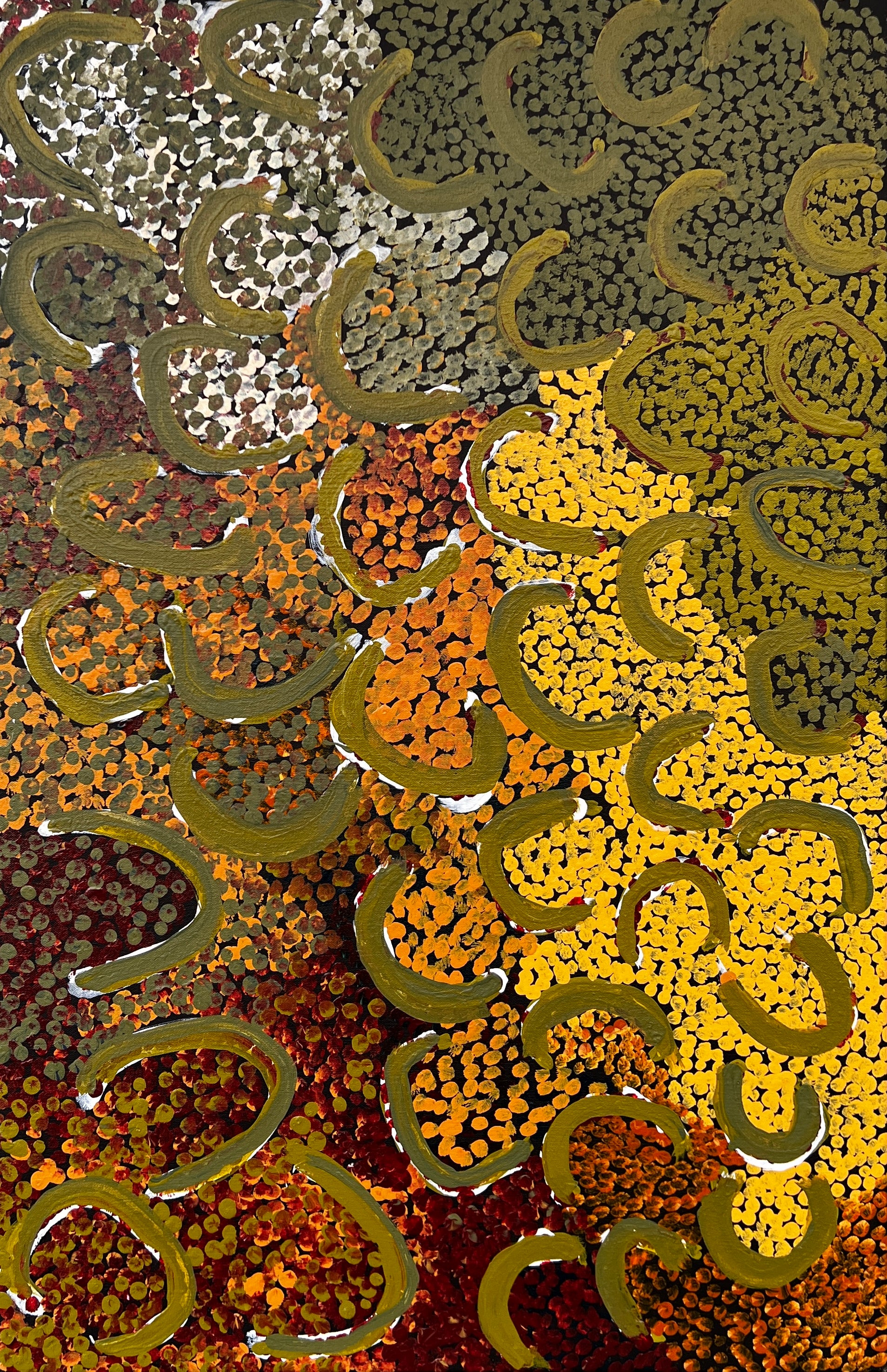Artist: May Chapman
Size: 61cm x 91cm
Medium: Acrylic on canvas
Story from the certificate of authenticity:
This is Mayiwalku’s Country- her ‘ngurra’ (home Country, camp). People identify with their ngurra in terms of specific rights and responsibilities, and the possession of intimate knowledge of the physical and cultural properties of one’s Country. Painting ngurra, and in so doing sharing the jukurrpa (Dreaming) stories and physical characteristics of that place, has today become an important means of cultural maintenance.
Mayiwaku's ngurra encompasses the Country that she and her family walked in the pujiman (traditional, desert-dwelling) era. Mayiwalku was born at Yirnangarri. She grew up, walked and hunted primarily around the Country extending across the Punmu, Kunawarritji (Canning Stock Route Well 33) and Karlamilyi (Rudell River) regions. Following the death of both their parents Mayiwalku and her sisiters travelled alone between Punmu and Kunawarritji, occasionally meeting with other family groups. they continued to live nomadically before eventually deciding to move to Jigalong Mission along with many other relatives following an extreme and prolonged drought in the 1960's.
Portrayed in this work are features of mayiwalku's ngurra, such as the dominant permanent red tali (sandhills), warta (trees, vegetation), and the individually named water sources she and her family camped at. These include Januwa, Jilankujarra, Karlajarntu, Kartungu, Kularti, Kumpupajanu, Kunalimpi, Kunarra, Marnakarti, Pangkapirni, Wilunganinya, wurur-wururna,Yilyara, and Yirrajarra Rock holes, waterholes, soaks and springs were all extremely important sites for Martu people during the pujiman period, and are generally depicted with circular forms.
The encyclopaedic knowledge of the location, quality and seasonal availability of the hundreds of water bodies found in one's Country sustained Martu as they travelled across their Country, hunting and gathering, visiting family, and fulfilling ceremonial obligations. They would traverse very large distances annually, visiting specific areas in the dry and wet season depending on the availability of water and the corresponding cycles of plant and animal life on which hunting and gathering bush tucker are reliant. As they travelled and hunted they would also burn areas of Country, generating a greater diversity of plant and animal life.
Martumili Artists was established in late 2006 and supports Martu artists in Kunawarritji, Punmu, Parnngurr, Jigalong, Warralong, Irrungadi (Nullagine) and Parnpajinya (Newman).Many Martu artists have close relationships with established artists amongst Yulparija, Kukatja and other Western Desert peoples and are now gaining recognition in their own right for their diverse, energetic and unmediated painting styles. Their works reflect the dramatic geography and scale of their homelands in the Great Sandy Desert and Rudall River regions of Western Australia. Martumili Artists represent speakers of Manyjilyjarra, Warnman, Kartujarra, Putijarra and Martu Wangka languages, many of whom experienced first contact with Europeans in the 1960s. The artists include painters, working in acrylics and oils, as well as weavers coiling baskets and sculptors working in wood, grass and wool. Martu artists proudly maintain their creative practices while pursuing social and cultural obligations across Martu homelands.

